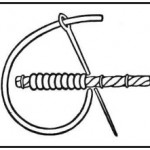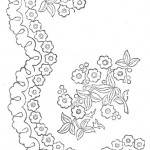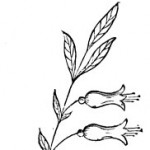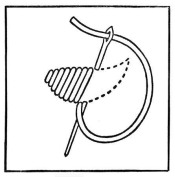 The satin stitch is perhaps the most recognizable and most used of all of the embroidery stitches. It is used to create a solid area of color. The satin embroidery stitch should always be worked in a hoop or frame otherwise the stitches will pucker or gap.
The satin stitch is perhaps the most recognizable and most used of all of the embroidery stitches. It is used to create a solid area of color. The satin embroidery stitch should always be worked in a hoop or frame otherwise the stitches will pucker or gap.
Depending upon the application, it may be feasible to start one stitch next to the one just completed but most often the stitch must be worked in a circular motion that creates stitches that look virtually the same on the front and the back.
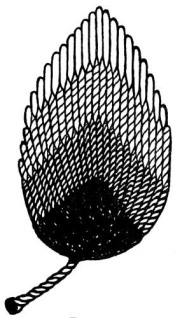 Here are two examples of using the satin embroidery stitch to create a gradation of color.
Here are two examples of using the satin embroidery stitch to create a gradation of color.
With the larger leaf to the left, each new row of stitches is worked slightly between the last to also add a bit of dimension and texture. The overall look is a bit stacked and un-natural looking.
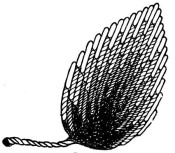 On the other hand, the smaller leaf also shows gradation of a more gradual scale. This leave was sewn by varying the stitch lengths which also creates a smoother edge and better mimicing the natural tendacy of a leaf to be slightly darker in the center and a bit lighter-colored on the edges.
On the other hand, the smaller leaf also shows gradation of a more gradual scale. This leave was sewn by varying the stitch lengths which also creates a smoother edge and better mimicing the natural tendacy of a leaf to be slightly darker in the center and a bit lighter-colored on the edges.
This group of leaves are further examples of the different looks you can achieve using the same basic satin stitch.

Leaf A was created by filling in the design with a padding of long, close stitches sewn from the base of the leaf outward. Satin stitches were then worked over the base in even stitches from right to left.
B was created essentially the same way but left an un-worked section in the center. Two long stitches were made on either side of the open area and were covered by the satin stitches to create crisp and sharp lines.
The stitches on leaf C were simply sewn around a central corded vein.
D is another divided example worked in a sloping satin stitch.
E was made with a corded vein and framed in a sloping satin stitch.
F was worked half in satin stitch, half in back-stitch and straight stem stitch.
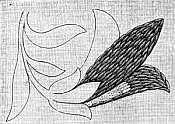 The encroaching flat or encroaching satin stitch is worked in equal length stitches that run one onto another and is worked in rows.
The encroaching flat or encroaching satin stitch is worked in equal length stitches that run one onto another and is worked in rows.
When filling an area with encroaching satin stitch let the thread size determine your stitch length – the thicker the thread, the longer the stitch.
This stitch is the one most commonly used in the beautiful embroidery from the Orient. Some believe the satin stitch is so named because it was so often worked on satin fabrics with colorful silk threads. You can learn more about how the satin stitch is used with long and short stitches to create beautiful and colorful embroideries.
